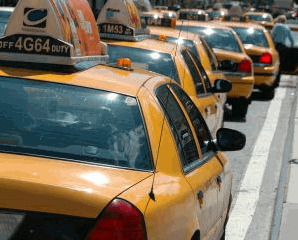Taxing Traffic
by Harold Elder In a bold speech delivered on Earth Day, New York City Mayor Michael Bloomberg proposed broad changes to improve the environment in the city. A centerpiece of this proposal, sure to be controversial, is an attempt to deal with traffic problems by imposing congestion charges on drivers who enter Manhattan. By charging motorists, the mayor aims to reduce pollution and relieve driving difficulties in the city. The plan would result in payments of up to $8 per day for drivers ($21 for trucks) who enter the busiest sections of the city—what the report calls the “Manhattan Central Business District.” The revenues generated by the fees would be used to fund transportation programs throughout the city, including road improvements, expansion of public transit, promotion of cycling, and increased enforcement of traffic laws.
In a bold speech delivered on Earth Day, New York City Mayor Michael Bloomberg proposed broad changes to improve the environment in the city. A centerpiece of this proposal, sure to be controversial, is an attempt to deal with traffic problems by imposing congestion charges on drivers who enter Manhattan. By charging motorists, the mayor aims to reduce pollution and relieve driving difficulties in the city. The plan would result in payments of up to $8 per day for drivers ($21 for trucks) who enter the busiest sections of the city—what the report calls the “Manhattan Central Business District.” The revenues generated by the fees would be used to fund transportation programs throughout the city, including road improvements, expansion of public transit, promotion of cycling, and increased enforcement of traffic laws.While Bloomberg’s proposal is innovative, New York is not the first city to consider such fees. Congestion charges have been in place since 2003 in London; and Stockholm, Singapore, and Toronto (among others) employ similar types of fees. The results in London have been fairly dramatic: the number of automobiles in the city decreased by more than 30%, traffic delays declined by 20%–30%, and average road speeds increased by nearly 20%. Opponents of the London plan—and there were many—argued that it would “strangle retailers,” but the feared drop in sales has not materialized.
City traffic imposes dual externalities on residents and commuters—there is the pollution produced by the vehicles in the area, but there is also the effect of traffic itself on drivers. Each driver represents only a small proportion of the actual traffic, but when all of the drivers are added in, the impact can be dramatic, slowing commute times substantially. Congestion charges represent a direct application of what is referred to as a corrective tax—forcing drivers to internalize the external costs that they impose on other drivers. For example, if the average commuter’s opportunity cost is $16 per hour, and the presence of an additional motorist increases the driving time of all other drivers by a total of 30 minutes each day, then the proposed charge of $8 per day could be interpreted as an appropriate tax.
Discussion Questions
1. How would drivers who pay the fees benefit from this program?
2. Beyond the expected benefits of reduced pollution and traffic congestion resulting from the congestion charges, are there other effects that could result from the imposition of these fees?
3. How would the benefits and costs of such a program be distributed?
Harold Elder is a professor of economics at the University of Alabama. His research and teaching focuses on applied microeconomics, including law and economics, public sector economics, and a range of public policy topics. He regularly teaches Principles of Microeconomics in the College of Commerce and Business Administration and is the advisor for his university's master's and Ph.D. programs.
Labels: Efficiency, Environment, Externalities, Incentives



3 Comments:
At 12:03 PM, April 30, 2007, Economan
said…
Economan
said…
Drivers will benefit from better roads.
At 12:03 PM, April 30, 2007, Econodude
said…
Econodude
said…
Reduced traffic, which would save time and gas (money).
At 12:07 PM, April 30, 2007, Economan
said…
Economan
said…
I like the way Econdude thinks. I agree that tax hikes will act as a rationing mechanism and produce more freeway driving space and less congestion.
Post a Comment
<< Home